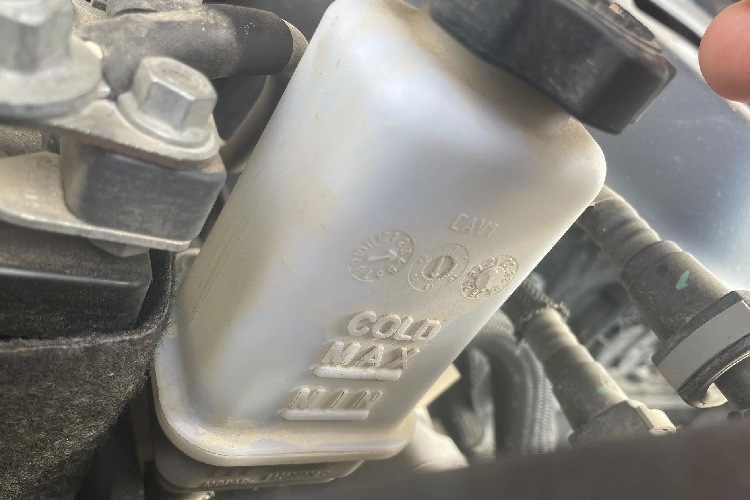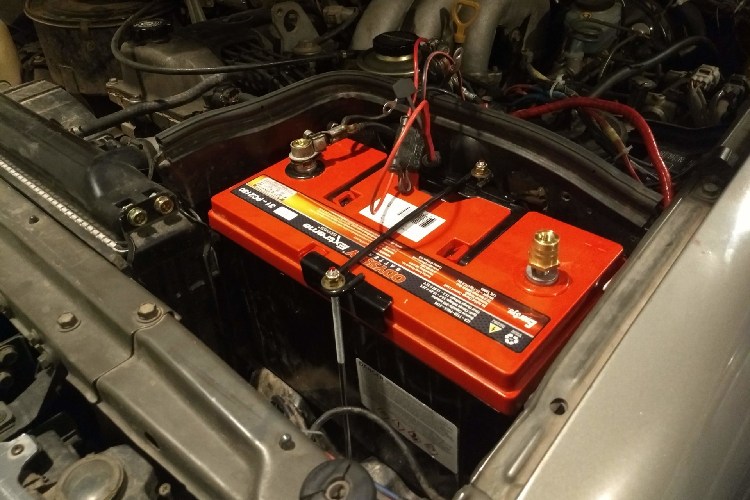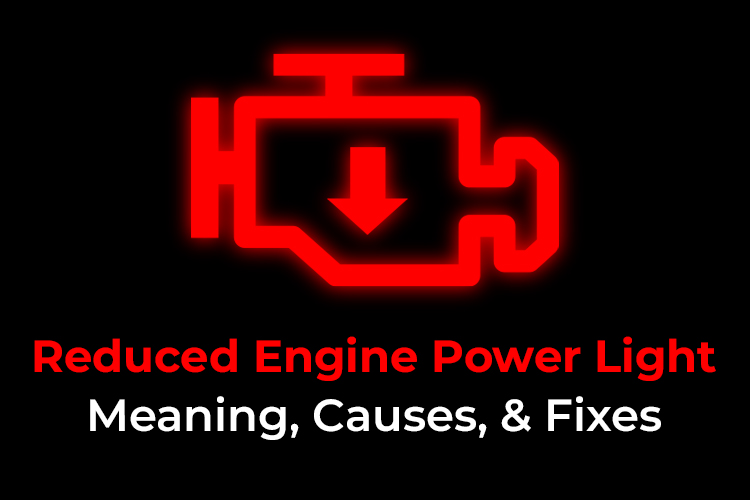Do you notice the power steering light on your car?
Have you ever wondered:
- What does the light mean?
- Can I drive with it?
- How do I fix it?
I’ve created this guide to answer your questions about the power steering light and show you how to fix it.
Read on to learn more.
What Does Power Steering Light Mean?

The power steering light is usually red or yellow with the image of a steering wheel with an exclamation point. Sometimes, the light might come on with the letters “EPS”.
The illumination of the power steering light is a warning that the power steering system has failed and reminds you to check the issue.
What triggers the light may vary depending on your car’s power steering system (I’ll explain this in the following section).
Once your ESP light flashes, you should find the cause and fix it as soon as possible before hitting the road again.
Is It Safe to Drive with the Power Steering Light On?
No, driving with the power steering light is not safe. Without power steering, you will find it challenging to maneuver your car. A faulty steering system will result in a lack of steering assist, which can lead to a collision.
If this warning light comes on when you are close to your home, it is safe to continue driving and take extra care until you arrive.
If you are far from home, I recommend you stop and inspect the car in a safe place.
Why Does the Power Steering Warning Light Come On?
The issue causing the power steering light to come on your vehicle’s dashboard varies, depending on whether your car uses a hydraulic or electric power steering system.
Here are the possible causes of this problem for both types of steering systems.
Hydraulic Power Steering Systems

Credit: 4xeforums.com
Low-power steering fluid is one of the common triggers for a steering warning light to illuminate. Once your steering light turns on, I recommend you pull over and check the fluid level.
If a fluid shortage is why the light comes on, it will go off once you top it up with the appropriate fluid type.
But, it is worth noting that low fluid means there is a leakage in the system that you should handle sooner rather than later. Refilling fluid is a short-term fix until you resolve the leakage issue.
However, if the fluid level is okay and the light is still on, you should call a professional to diagnose and fix the problem.
In case you want to handle it yourself, proceed to the next part, where I will share some tips to help you inspect and reset the light.
Electric Power Steering Systems

Credit: forum.ih8mud.com
Electric power steering systems do not use fluid, so the light will not come on for low fluid levels. The power steering light may illuminate due to a problem with the battery or alternator (Here is a comprehensive guide to testing a car battery with a multimeter).
Sometimes, restarting the engine is a quick fix for this problem in cars with an EPS system. The light might disappear once you turn off the car and turn it back on.
However, if the warning light is still on after restarting the car, hand it over to an expert to fix it.
How to Reset the Power Steering Light
Here is a systematic guide to reset your car’s power steering light.

Step 1: Perform a visual inspection
A careful visual inspection can help you spot the cause of this issue in your car.
Hydraulic Power Steering Systems: You should check the power steering fluid level to ensure it meets the specified gauge. If the fluid level is low, top it up and restart the engine to see in case the light goes off.
Electric Power Steering Systems: Inspect all battery connections if your car uses an electric power steering system. Check for visible damages or wear on the cables and replace them if necessary. Restarting the engine can also help resolve this issue.
If this light is still on, move to the next step.
Step 2: Use the OBD2 scanner to read the trouble code
Connect the scanner to your car, turn on the ignition, and press the “Read” button on the device.
The device will scan your vehicle to figure out what is causing your EPS light to come on.
You should buy an advanced OBD2 scanner compatible with your car for this solution.
I used the Autel MK808 OBD2 scanner to test several cars in the United States: a 2016 Toyota Corolla, a 2012 Honda Civic, a 2008 VW Rabbit, a 2013 Mazda 3, and others.
After scanning the cars, I saw the following trouble codes; they are often associated with an EPS light on a car’s dashboard.
- C1607 – EPS Control Module Malfunction
- C1532 – Torque Sensor Power Circuit Low
- C1513 – Torque Sensor Circuit Malfunction
- C1555 – Motor Current Circuit Malfunction
Step 3: Fix the problem
Fix the malfunctioning or replace the broken parts depending on the trouble code. You should leave the repair or replacement to an expert if you cannot do them.
Step 4: Clear the trouble codes
Clear the trouble codes by pressing the “Erase” button and then turn off the ignition. Next, restart the car and test drive (50-100 miles).
What’s Next?
The power steering light will notify you if your steering system is faulty. You should pay close attention to your car’s steering system once you see the light come on. Use the right tool to determine the faults and fix them.
If you still haven’t found a suitable OBD2 scanner with a full system, here are my two top choices:
- LAUNCH X431 V PRO: offers a ton of functions, ECU online coding, and Bi-directional control.
- Autel MK808: is made for someone who is relatively serious about cars.
Please drop a comment if you have questions or want to share your experience with others.

Recommended for you
Reduced Engine Power Light: Meaning, Causes, & Fixes